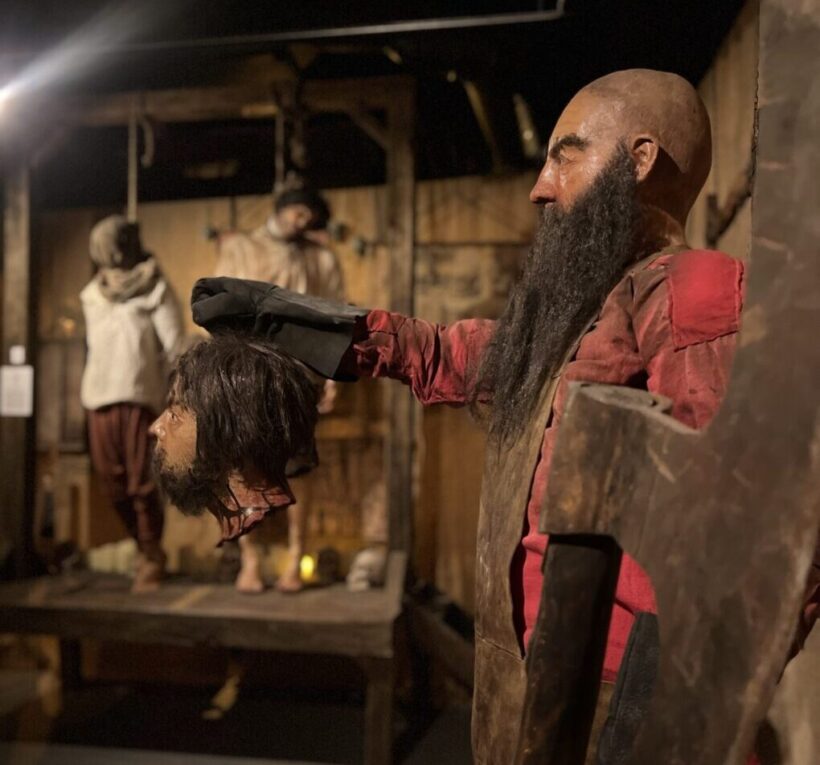Executioners played a crucial role in medieval society, embodying both fear and authority. Tasked with carrying out justice, their work involved wielding tools like the medieval executioner axe or sword to perform grim acts such as medieval beheading. Despite their vital role in upholding the monarchy’s laws, executioners often faced societal scorn and isolation. This article explores their responsibilities, tools, payment, and enduring legacy.
The Role of Medieval Executioners
Upholding Justice Through Fear
The medieval executioner was a symbol of dread and punishment, executing criminals, traitors, and heretics. Public executions served as a deterrent, reinforcing the authority of monarchs and the judicial system. Executioners’ roles extended beyond the gallows, as they also managed medieval times execution practices like torture and interrogation.
Why Did Executioners Wear Masks?
The iconic masks and hoods worn by executioners served both practical and symbolic purposes. But why did executioners wear masks? Primarily, masks concealed their identity, protecting them from revenge by the victim’s family. Additionally, masks dehumanized the executioner, reinforcing their role as an instrument of justice rather than an individual.
The Tools of the Trade
The Executioner’s Axe and Sword
The medieval executioner axe was a fearsome tool, designed for swift and effective decapitation. Executioners honed their skills to ensure a clean strike, as any mistakes brought shame and prolonged torment. Similarly, the medieval executioner sword was used in specific regions for high-status executions, symbolizing a cleaner, more “honorable” death.
The Gallows and Beyond
Executioners also presided over hanging, a common form of punishment. The gallows symbolized authority and finality, and its presence in towns served as a constant reminder of the consequences of defying the law.
The Life of an Executioner
Payment and Social Standing
One curious question often asked is, how much does an executioner get paid? Surprisingly, their wages varied widely. Royal executioners received higher compensation for their services, including bonuses for high-profile executions. However, the stigma of their work relegated them to the fringes of society, where they faced disdain despite their essential role.
Royal Executioners and Famous Cases
The royal executioner carried out sentences for the monarchy, often overseeing the most significant and politically charged cases. High-profile executions, such as those of Anne Boleyn and Mary, Queen of Scots, highlighted the skill and professionalism expected of these figures. Such famous medieval executions remain etched in history, underscoring the executioner’s role in shaping political narratives.
The Psychology of Execution
Fear and Authority
Executioners wielded immense psychological power. The very sight of their tools-be it the cleaver, gallows, or sword-instilled fear in onlookers. This fear was a tool of control, allowing rulers to maintain order in their realms.
The Shame and Isolation of Executioners
Despite their importance, executioners lived on the outskirts of society. The combination of their grisly work and the public’s fear rendered them outcasts. Yet, their role was indispensable, bridging the gap between law and punishment.
Modern Reflections
Museums Preserving Executioner History
For those curious about the life and tools of medieval executioners, the Medieval Torture Museum in Chicago offers an in-depth look at this dark chapter of history. With authentic exhibits and interactive displays, it’s one of the most unique places to go in Chicago. Similar experiences can be found at the Medieval Torture Museum in LA and St Augustine.
Insights from the Museum Blog
To delve deeper into the psychology and history of executioners, the museum’s blog offers articles that explore their tools, techniques, and societal impact.
The medieval executioner was more than a wielder of axes and swords; they were an integral part of the justice system, maintaining order through fear and punishment. By exploring their tools, methods, and societal roles, we gain a clearer picture of their paradoxical lives-feared yet ostracized, vital yet shunned. Whether visiting museums or reading about their history, the story of executioners offers a sobering glimpse into the complexities of medieval society.






